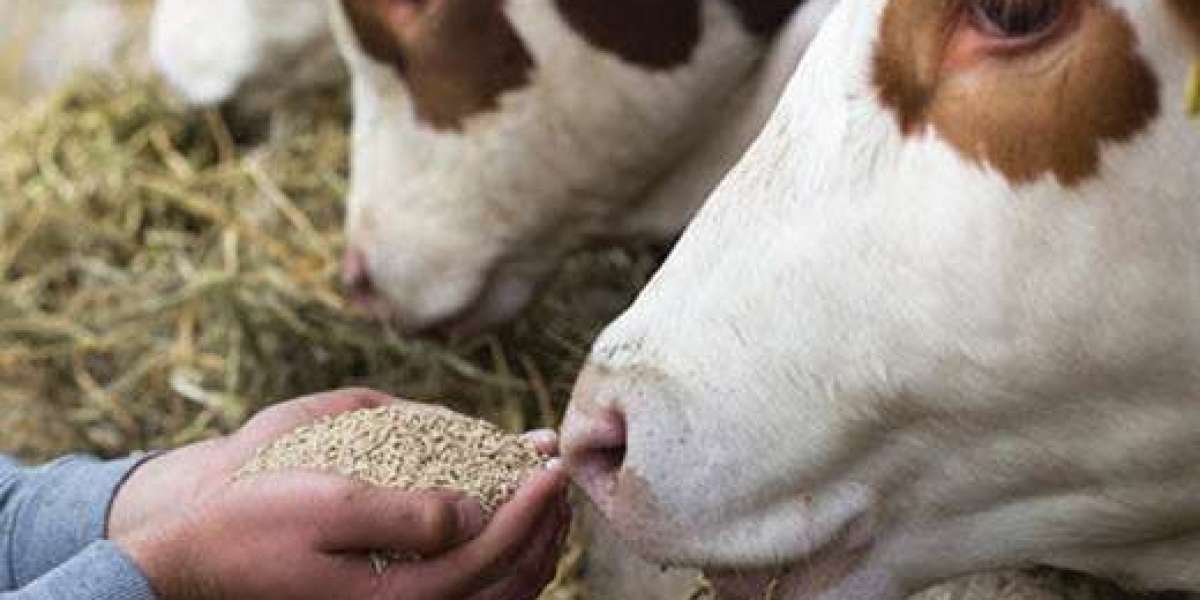The global animal feed additives market has witnessed substantial growth in recent years, driven by rising demand for high-quality meat, dairy, and poultry products. As livestock producers focus on enhancing animal health and productivity, the demand for nutritional and sustainable feed additives has surged. With advancements in biotechnology, regulatory support, and increasing consumer awareness of food safety, the animal feed additives market is set for steady expansion.
Market Trends Driving Growth1. Rising Demand for Nutrient-Enriched FeedLivestock farmers are increasingly adopting feed additives to enhance the nutritional value of animal diets. Essential nutrients like amino acids, vitamins, minerals, and enzymes play a crucial role in improving digestion, growth rates, and immunity. The shift towards precision nutrition has further fueled the adoption of customized feed formulations, ensuring optimal animal health and productivity.
2. Growing Awareness of Animal Health & WelfareWith growing concerns over livestock diseases and antibiotic resistance, there is an increasing preference for natural feed additives such as probiotics, prebiotics, and essential oils. These additives promote gut health, reduce dependency on antibiotics, and improve feed conversion efficiency. As consumers demand antibiotic-free meat, poultry, and dairy products, manufacturers are investing in alternative feed solutions to maintain livestock health while adhering to stringent regulatory guidelines.
3. Technological Advancements in Feed Additive DevelopmentThe animal feed industry is leveraging biotechnology and nanotechnology to develop more efficient and sustainable additives. Enzymes and organic acids are being optimized to enhance nutrient absorption and reduce feed waste. Innovations in encapsulation technologies have improved the stability and efficacy of heat-sensitive additives, ensuring better nutrient delivery.
4. Regulatory Framework and Sustainability InitiativesGovernments and regulatory bodies worldwide are promoting feed additive innovations that enhance livestock production without compromising food safety. The European Union’s ban on antibiotic growth promoters has accelerated the demand for alternative additives like phytogenics and organic acids. Similarly, sustainability initiatives are encouraging the development of environmentally friendly feed additives that minimize methane emissions from ruminants and optimize nutrient utilization.
5. Expansion of Livestock Farming and Meat ProductionThe rising global population and increasing protein consumption have led to the expansion of livestock farming, particularly in developing economies. This expansion fuels the demand for feed additives that improve feed efficiency, weight gain, and reproductive performance in animals. Countries like China, India, and Brazil are witnessing significant growth in the poultry and aquaculture sectors, further driving the demand for specialized feed additives.
Key Market SegmentsThe animal feed additives market is broadly segmented into:
Type: Amino acids, vitamins, minerals, enzymes, probiotics, prebiotics, antioxidants, and flavors
Livestock: Poultry, swine, ruminants, aquaculture, and pet animals
Form: Dry, liquid, and others
Region: North America, Europe, Asia-Pacific, Latin America, and the Middle East & Africa
Challenges and RestraintsDespite the promising growth, the market faces challenges such as fluctuating raw material costs, regulatory complexities, and the need for extensive research to develop cost-effective, sustainable additives. Additionally, consumer skepticism regarding genetically modified organisms (GMOs) in feed additives may hinder market adoption in certain regions.
Future Prospects and OpportunitiesThe future of the animal feed additives market looks promising with ongoing research and innovation. The following trends will shape the industry’s growth trajectory:
Rise of Functional and Natural Additives: The demand for plant-based and organic feed additives will continue to grow.
Digitalization in Animal Nutrition: The adoption of AI-driven precision feeding systems will optimize feed formulation and reduce waste.
Expansion in Aquaculture Feed Additives: The aquaculture industry will witness increased use of specialized feed additives for fish and shrimp nutrition.
Sustainable Feed Production Practices: Companies will invest in eco-friendly feed solutions that enhance digestibility and minimize environmental impact.
Conclusion:-The animal feed additives market is experiencing robust growth, driven by evolving consumer preferences, regulatory policies, and technological advancements. As the livestock industry continues to prioritize animal health, nutrition, and sustainability, the market is expected to witness steady expansion in the coming years. Companies that focus on innovation, quality, and compliance with regulatory frameworks will gain a competitive edge in this dynamic sector.
Search
Popular Posts








